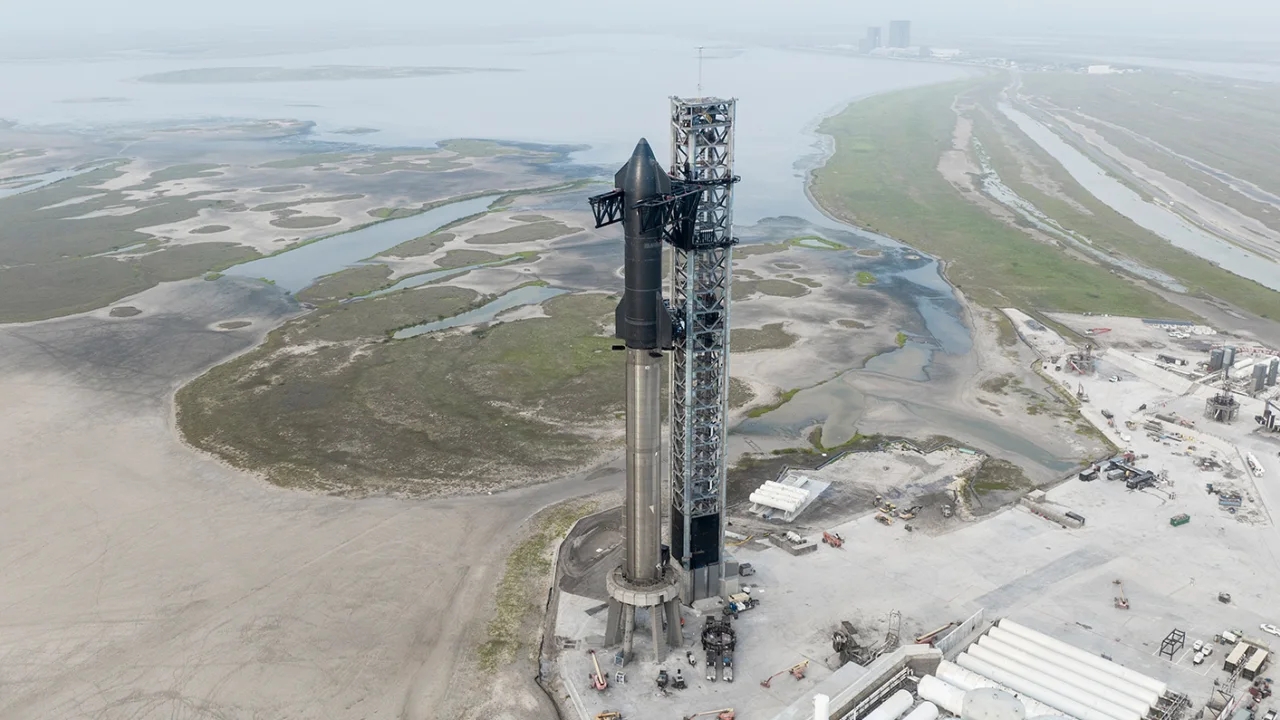() — SpaceX cleared the last regulatory hurdle ahead of the maiden launch of its Starship rocket, the most powerful ever built.
The Federal Aviation Administration (FAA), in charge of granting licenses for the launch of commercial rockets, announced this Friday that it agreed to the company’s request to carry out an unmanned flight test of the rocket from SpaceX facility in South Texas. The vehicle, which has already undergone pre-flight ground tests, is ready for takeoff as soon as Monday.
“Following a comprehensive license evaluation process, the FAA determined that SpaceX met all safety, environmental, political, payload, airspace integration, and financial responsibility requirements,” the agency said in a statement.
The FAA issued an air traffic restriction for the area surrounding the launch early this Friday. The Notice to Air Missions, or NOTAM, directs aircraft and other air traffic to stay clear of the drop zone east of Brownsville, Texas on Monday between 7:00 a.m. and 10:05 a.m. CT ( 8:00 a.m. to 11:05 a.m. ET).
This will be SpaceX’s first attempt to launch the Starship into orbit, following a multi-year testing campaign to refine the rocket design.
Elon Musk, CEO of SpaceX, has been talking about Starship for a decade, giving elaborate presentations about its design and describing it as the vehicle that supports SpaceX’s founding purpose: to send humans to Mars for the first time.
The Starship spacecraft stacked on top of the Super Heavy rocket booster at the SpaceX launch site in Texas. Credit: SpaceX
Furthermore, NASA already awarded SpaceX contracts and options worth more than $3 billion to use the Starship to transport government astronauts to the surface of the Moon under the space agency’s Artemis program.
The maiden flight test will not complete one orbit around the Earth. However, if successful, it will reach orbital speeds and travel some 240 kilometers above the Earth’s surface, well above the altitude where outer space is considered to begin.
Starship is made up of two parts: the Super Heavy rocket, a gigantic rocket that houses 33 engines, and the Starship spacecraft, which sits atop the rocket during launch and is designed to detach once the rocket runs out of fuel to finish. The mission.
In this flight, the booster rocket will be launched into the ocean shortly after liftoff. On future flights, however, SpaceX plans to recover the vehicle by guiding it to a vertical landing at the launch site. The Starship spacecraft will circle the planet almost completely and end its flight with a splashdown in Hawaii.
how did it get here
Starship development has taken place at SpaceX’s private spaceport, about 40 minutes from Brownsville, Texas, on the US-Mexico border. Testing began years ago with brief “test hops” of early spacecraft prototypes. The company started with short flights that rose a few dozen meters above the ground before evolving into high-altitude flights, most of which ended with dramatic explosions as the company tried to land them upright.
However, a suborbital flight test in May 2021 ended successfully.

On February 8, SpaceX workers make final adjustments to Starship’s orbital launch support and the booster’s Raptor engine array, ahead of the company’s engine test. Credit: Reginald Mathalone/Nurpho/Associated Press
Since then, SpaceX has also worked to prepare its Super Heavy rocket for flight. The massive 69-meter-tall cylinder carries 33 of the company’s Raptor engines.
Fully stacked, the Starship and Super Heavy have a height of about 120 meters.
SpaceX has been waiting for FAA approval for an orbital launch attempt for more than a year.
The company, and the federal regulators tasked with certifying that SpaceX launches will not pose risks to people or property in the area around the launch site, have faced significant opposition from the local community, including environmental groups. .
In June, the FAA granted SpaceX key approval to launch Starship, though it set out a list of “mitigation measures” the company would have to take before the first launch.
During a call with reporters this week, an FAA official, who declined to be cited for publication, said the agency has monitored SpaceX’s compliance with mitigation measures, some of which are still in the works, including while the launch license is issued.
The FAA official said that government personnel will be on the ground to ensure that SpaceX complies with its license during the test launch.














![[Img #74675]](https://thelatestnews.world/wp-content/uploads/2024/12/They-discover-a-new-class-of-X-ray-sources-in-the-300x200.jpg)